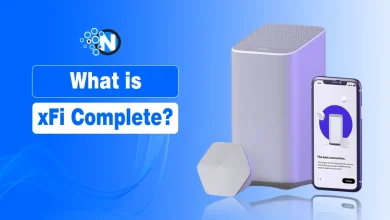What is Cybersecurity And Why Is it Important for Businesses?

The significance of cybersecurity cannot be underscored. According to the World Economic Forum, cybercrime is expected to cost the world USD 24 trillion by 2027. To contextualize the number, it is bigger than China’s economy, the second biggest country economy in the world.
It is not hard to see why cyber-attacks will be on the rise, though. We have only become more and more technology dependent over the past couple of decades. And that is unlikely to stop anytime soon. On the contrary, the proliferation of more advanced computing and AI assures that we will rely on it even more.
As more apps are downloaded onto our smartphones, the number of companies with access to all our data rises. This in turn exposes it to more potential vulnerabilities in their systems. Moreover, with work from home on the rise, company data is being accessed by potentially insecure networks as well.
Develop a clear cybersecurity strategy
The question now is, how can cybersecurity be ensured effectively keeping in mind the rapid developments in tech. The answer lies in the formulation of a robust cybersecurity strategy, which has multiple components such as:
- Assess risks to zero down on requirements: The first step is to know what the threats to an organization are. Only once these are known with clarity can the right security actions be taken. These actions include developing the right policies including educating employees on being alert to spurious websites or attachments, as examples.
- System security measures: The next step is to ensure that basic system security measures are in place. These can include the likes of firewalls, secure Wi-Fi access and anti-virus softwares.
- Data protection: It is also essential to ensure that particularly sensitive data is well protected. This can be done through restricting access to this data as well as encrypting it, making it harder to access.
- Cybersecurity software: Besides the basic measures described above, there is now a plethora of stronger cybersecurity software available too. One example is Static Application Security Testing (SAST), which points out vulnerability in source code as it is under development. This enables development of increasingly stronger iterations of the code that are more capable of withstanding attacks. Another example is software composition analysis or SCA for business, which scans third party resources for any vulnerabilities.
- External cybersecurity consultation: It is also essential to get external consultation on cybersecurity. Experts in the field can assess the risks from an unbiased perspective and offer solutions. They can also update on the newest and most effective cybersecurity solutions available.
- Regular risk assessment: Finally, doing regular risk assessments are required to ensure that the cybersecurity measures are up to date. As pointed out initially, cybercrime is only growing. As a result, the tools used to conduct it are also becoming more sophisticated. These need to be countered proactively with appropriate cybersecurity measures.
The future of cybersecurity
This last point is particularly critical considering that we are only expected to have more and more data online moving forward. Even now there are plenty of geographies in developing and less developed countries that have much scale up potential. But even elsewhere, more activities than even now could be conducted online leading to more cyberdata. More data means a higher likelihood of data breaches in the future, as per the experts. This also ties in with the earlier point of the need for scanning third party information like with SCA.
Interestingly though, passwords are expected to be very much around. However, as is already being increasingly adopted, more biometric data will be used. It is also expected that the cloud will no longer be as much in vogue as it is today. On the contrary, more peer-to-peer networks are likely. That might sound like one less cybersecurity problem, but it is possible that the closed networks themselves throw up other challenges.
Cybersecurity is here to stay
Whichever way we look at it though, past, present, or future, it is clear that cybersecurity is here to stay. The data on cybercrime shows that it has only been growing over the years. It is also expected to cause damage in unheard of numbers in the next few years.
This calls for organizations to be proactive in ensuring that they are well secured. There are plenty of ways to do this. But the crucial first step is to formulate a cybersecurity strategy that fleshes out the key pain points. Once these are identified, the right actions can be taken to tighten security. This can range from basics like firewalls, password protection and anti-virus sofwares to more sophisticated solutions like SAST and SCA.
It might even be helpful for businesses to engage with external cybersecurity consultants. As experts in the field, they can point out otherwise overlooked security requirements. They can also suggest solutions that are exactly right for a company’s challenges. And they can also point to the best evolving solutions available for future concerns.




